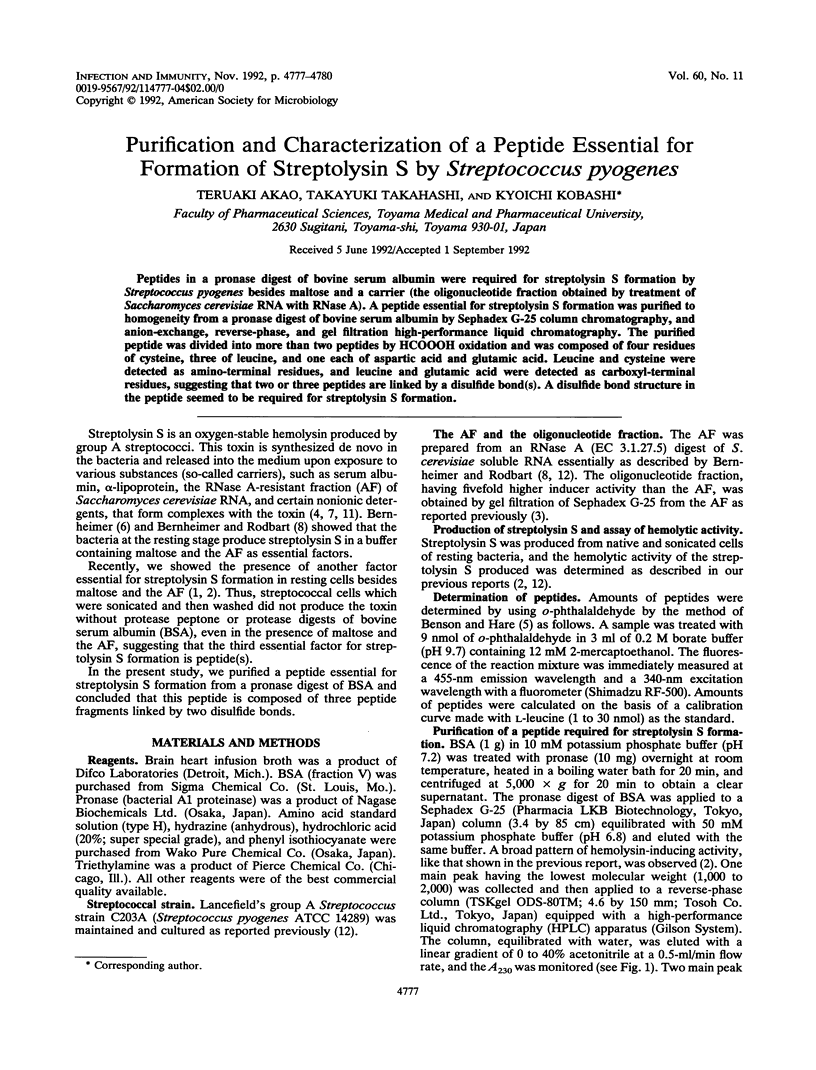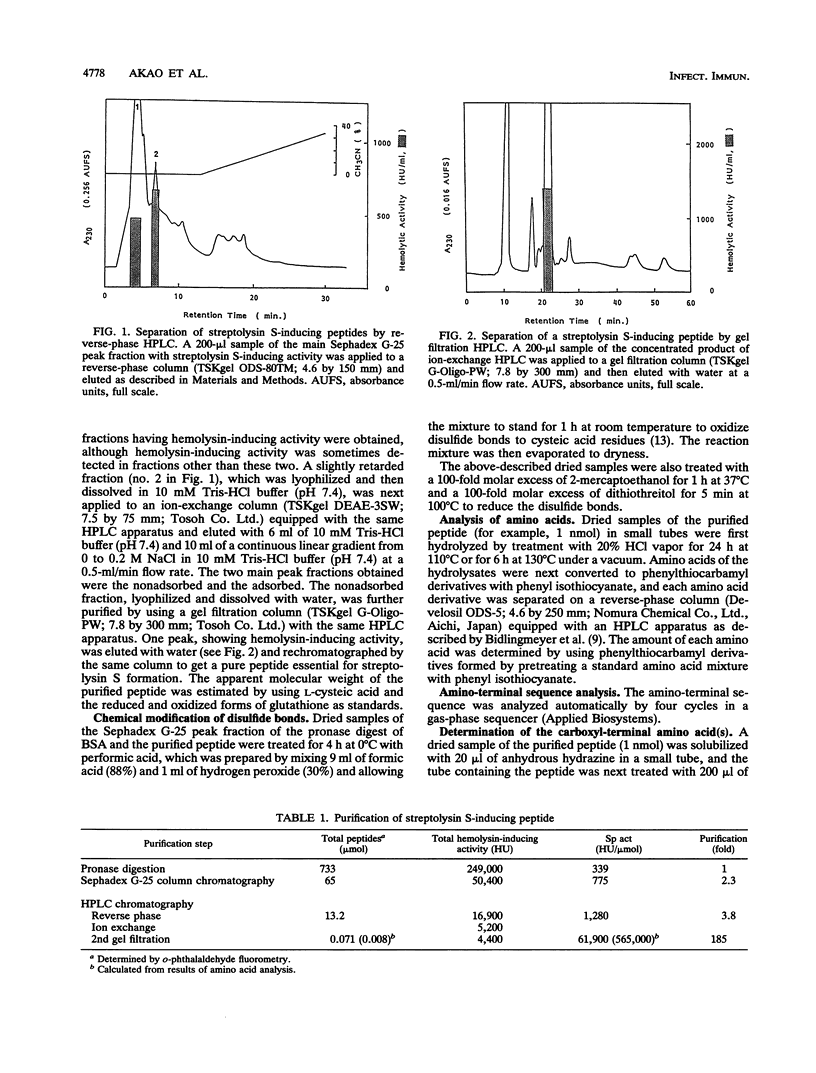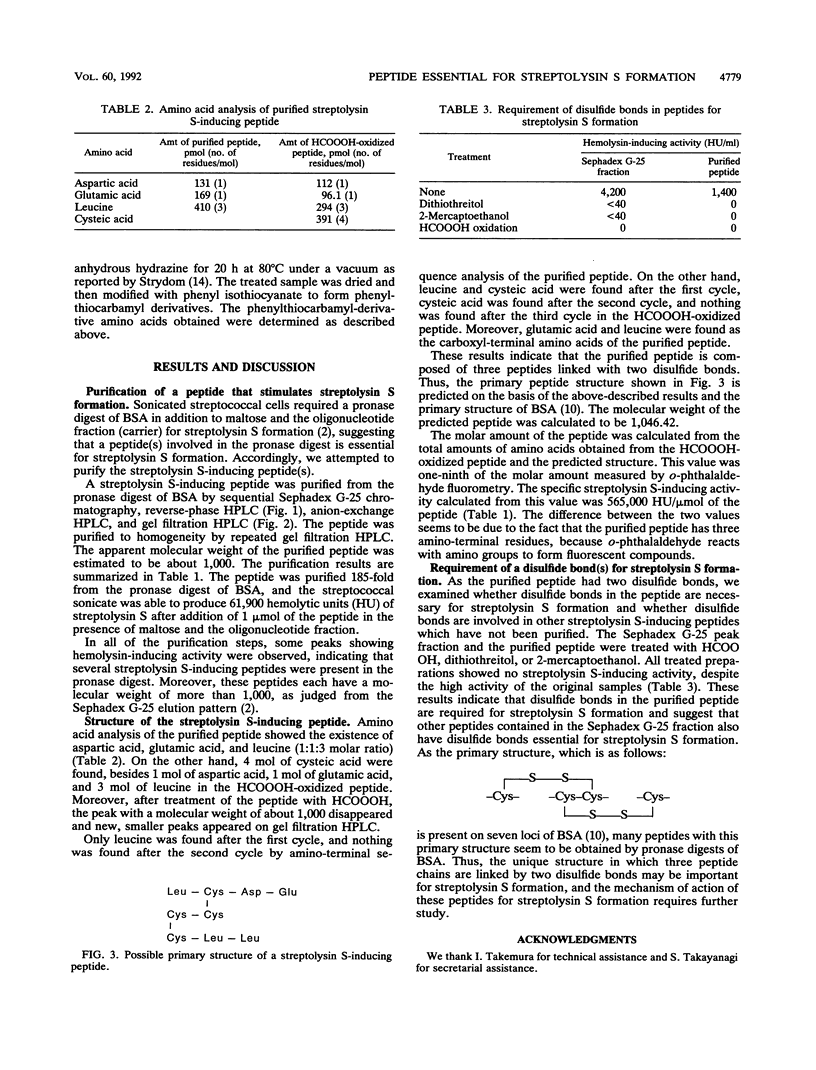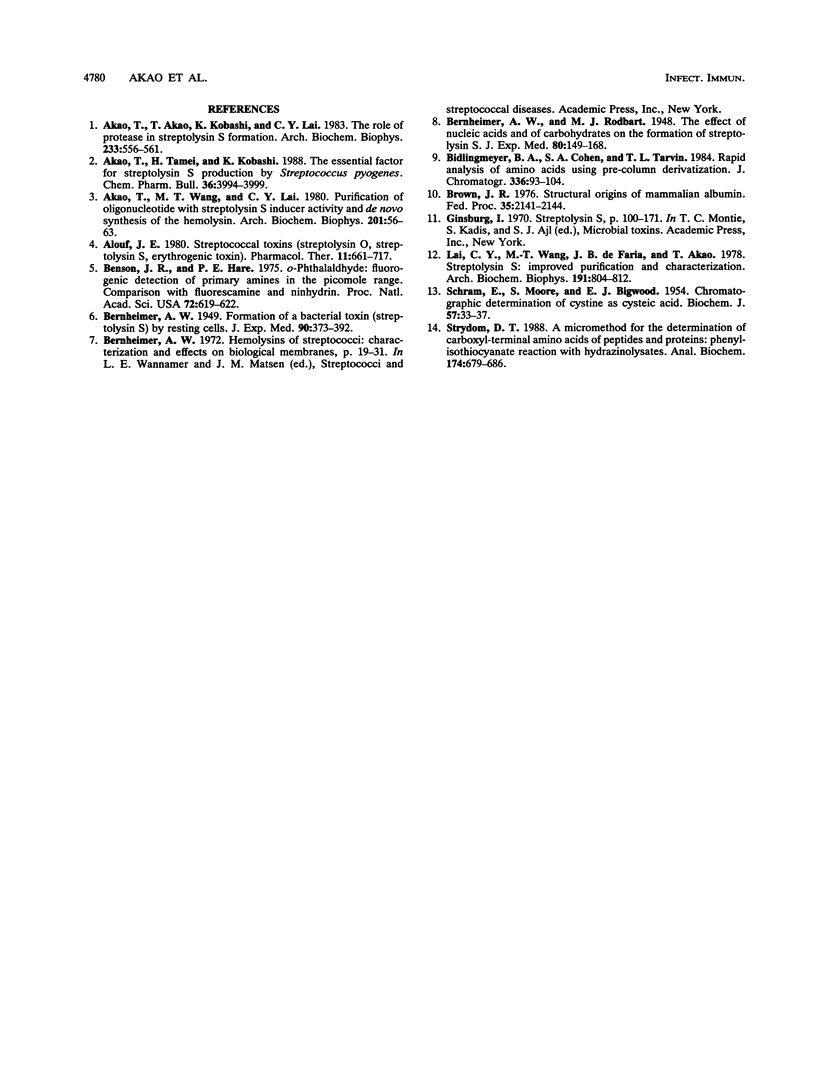Abstract
Peptides in a pronase digest of bovine serum albumin were required for streptolysin S formation by Streptococcus pyogenes besides maltose and a carrier (the oligonucleotide fraction obtained by treatment of Saccharomyces cerevisiae RNA with RNase A). A peptide essential for streptolysin S formation was purified to homogeneity from a pronase digest of bovine serum albumin by Sephadex G-25 column chromatography, and anion-exchange, reverse-phase, and gel filtration high-performance liquid chromatography. The purified peptide was divided into more than two peptides by HCOOOH oxidation and was composed of four residues of cysteine, three of leucine, and one each of aspartic acid and glutamic acid. Leucine and cysteine were detected as amino-terminal residues, and leucine and glutamic acid were detected as carboxyl-terminal residues, suggesting that two or three peptides are linked by a disulfide bond(s). A disulfide bond structure in the peptide seemed to be required for streptolysin S formation.
Full text
PDF



Selected References
These references are in PubMed. This may not be the complete list of references from this article.
- Akao T., Akao T., Kobashi K., Lai C. Y. The role of protease in streptolysin S formation. Arch Biochem Biophys. 1983 Jun;223(2):556–561. doi: 10.1016/0003-9861(83)90620-3. [DOI] [PubMed] [Google Scholar]
- Akao T., Tamei H., Kobashi K. The essential factor for streptolysin S production by Streptococcus pyogenes. Chem Pharm Bull (Tokyo) 1988 Oct;36(10):3994–3999. doi: 10.1248/cpb.36.3994. [DOI] [PubMed] [Google Scholar]
- Akao T., Wang M. T., Lai C. Y. Purification of oligonucleotides with streptolysin S inducer activity and de novo synthesis of the hemolysin. Arch Biochem Biophys. 1980 Apr 15;201(1):56–63. doi: 10.1016/0003-9861(80)90486-5. [DOI] [PubMed] [Google Scholar]
- Alouf J. E. Streptococcal toxins (streptolysin O, streptolysin S, erythrogenic toxin). Pharmacol Ther. 1980;11(3):661–717. doi: 10.1016/0163-7258(80)90045-5. [DOI] [PubMed] [Google Scholar]
- Benson J. R., Hare P. E. O-phthalaldehyde: fluorogenic detection of primary amines in the picomole range. Comparison with fluorescamine and ninhydrin. Proc Natl Acad Sci U S A. 1975 Feb;72(2):619–622. doi: 10.1073/pnas.72.2.619. [DOI] [PMC free article] [PubMed] [Google Scholar]
- Bidlingmeyer B. A., Cohen S. A., Tarvin T. L. Rapid analysis of amino acids using pre-column derivatization. J Chromatogr. 1984 Dec 7;336(1):93–104. doi: 10.1016/s0378-4347(00)85133-6. [DOI] [PubMed] [Google Scholar]
- Brown J. R. Structural origins of mammalian albumin. Fed Proc. 1976 Aug;35(10):2141–2144. [PubMed] [Google Scholar]
- Lai C. Y., Wang M. T., de Faria J. B., Akao T. Streptolysin S: improved purification and characterization. Arch Biochem Biophys. 1978 Dec;191(2):804–812. doi: 10.1016/0003-9861(78)90423-x. [DOI] [PubMed] [Google Scholar]
- SCHRAM E., MOORE S., BIGWOOD E. J. Chromatographic determination of cystine as cysteic acid. Biochem J. 1954 May;57(1):33–37. doi: 10.1042/bj0570033. [DOI] [PMC free article] [PubMed] [Google Scholar]
- Strydom D. J. A micromethod for the determination of carboxyl-terminal amino acids of peptides and proteins: phenylisothiocyanate reaction with hydrazinolysates. Anal Biochem. 1988 Nov 1;174(2):679–686. doi: 10.1016/0003-2697(88)90073-5. [DOI] [PubMed] [Google Scholar]


